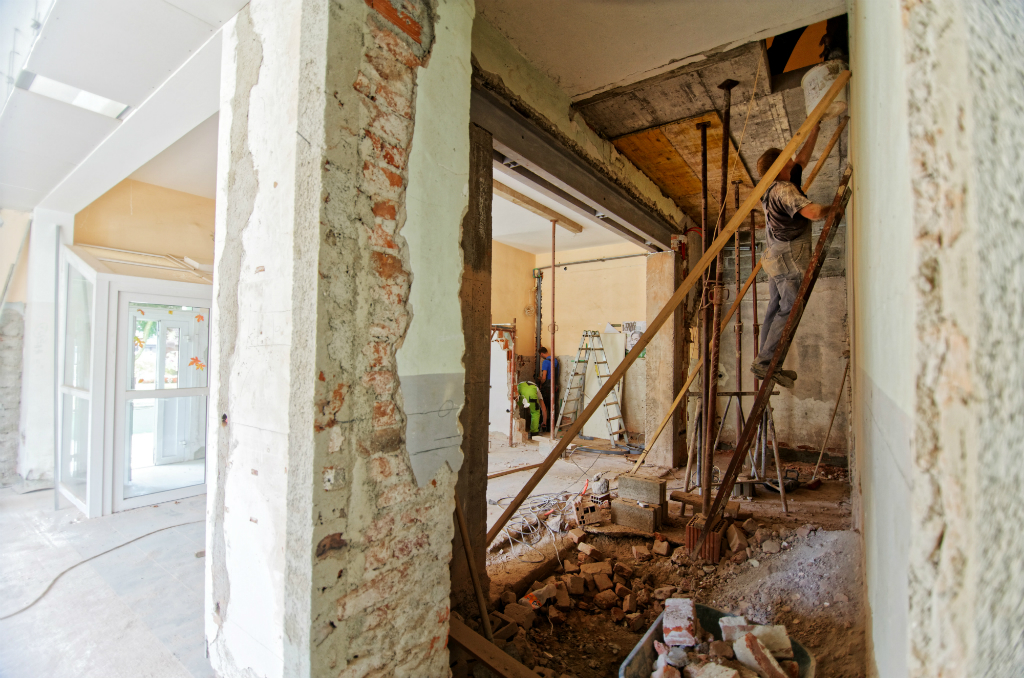Floridians looking to get into the house-flipping game can rest easy knowing the Sunshine State has been ranked one of the top markets to fix-and-flip properties.
According to Auction.com, property flipping in Florida can generate a return on investment of 83 percent. With an average house listing price of $406,803, Florida fixer-uppers can expect an average profit of $59,917.
Probably the best part about those profits is that Florida flippers don’t have to spend as much time doing the dirty work compared to other states. Numbers from 2018 showed the average project took 151 days, making Florida the second fastest state to turn around properties behind Tennessee’s average project time of 147 days.
At the city level, Realtor.com ranked Orlando the third-best option in the country. The median home price is $300,000 and there’s a 41 percent difference between purchase and sale prices.
“If you want to be in the right school district with the right price without going over budget, then these renovated flip homes are what you want,” local real estate agent Rose Kemp told the website. “They are move-in ready, and the closest thing to new construction that many [people] can afford.”
But with a 37 percent increase in the number of Orlando home flips, Realtor.com says fixer-uppers are looking at areas about an hour away from the city. The website specifically mentions Lake County, where older ranch homes are selling for $150,000 and being flipped for $250,000.
As for the worst city in the state to flip properties, Realtor.com placed Cape Coral at number two. The median home price is $299,100 with a 40 percent difference between purchase and sale prices. The number of flips was actually -14 percent in 2018.
“We’re in a declining market,” local real estate broker Mike Lombardo told the website.
Realtor.com believes investors could be staying away for two reasons: Cape Coral’s 400-mile canal system overflowed and damaged homes during Hurricane Irma and overbuilding in the area. Home values in Cape Coral dipped 3 percent over a 12-month period following Hurricane Irma.
For the most part, flipping is not only on the rise but also very profitable. According to CoreLogic, a housing analytics firm, house flipping rates have nearly reached pre-crisis levels. For example, in 2006, 11.3 percent of U.S. home sales were flips. Fast forward to 2018 where 10.6 percent of fourth-quarter sales were flips.
While house flipping rates are almost at their 2006 levels, profits have actually skyrocketed past what they were 12 years ago. In the fourth quarter of 2018, fixer-uppers raked in nearly 23 percent more on flips compared to the 6 percent back in 2006.
Now, house flipping was a big contributor to the economic meltdown in 2008. However, Ralph McLaughlin, deputy chief economist for CoreLogic, told the Wall Street Journal that there’s less of a concern today because of how the market has changed.
“Flippers are very different today than they were in the past,” McLaughlin said. “Even though we see hype and hysteria in popular culture, this isn’t necessarily something to worry about.”
Another difference is how institutionalized the market has become. Corporations are buying homes to flip as well as making instant offers to flippers.
During an earnings call earlier this year, Zillow laid out its transformational plans. Company leaders announced a revenue target of $22 billion, $20 billion from buying and selling homes, in the next three to five years.
Rob Hahn, a managing partner at real estate consulting firm 7DS Associates, is convinced that by 2024 around 60 percent of all homes sold will be iBuyer sales.
It’s statistics like that why zavvie, a hyperlocal marketing platform for real estate agents, launched an instant offer tool.
Offer Optimizer allows homeowners to compare instant cash offers from top iBuyers such as Zillow Offers, Redfin Now, Opendoor and Offerpad.

William is the Managing Editor at FloridaInsider.com. His years of experience in journalism, broadcasting and multimedia include roles as a Writer and Web Producer. He graduated from Florida International University with a Bachelor of Science and Communication.

